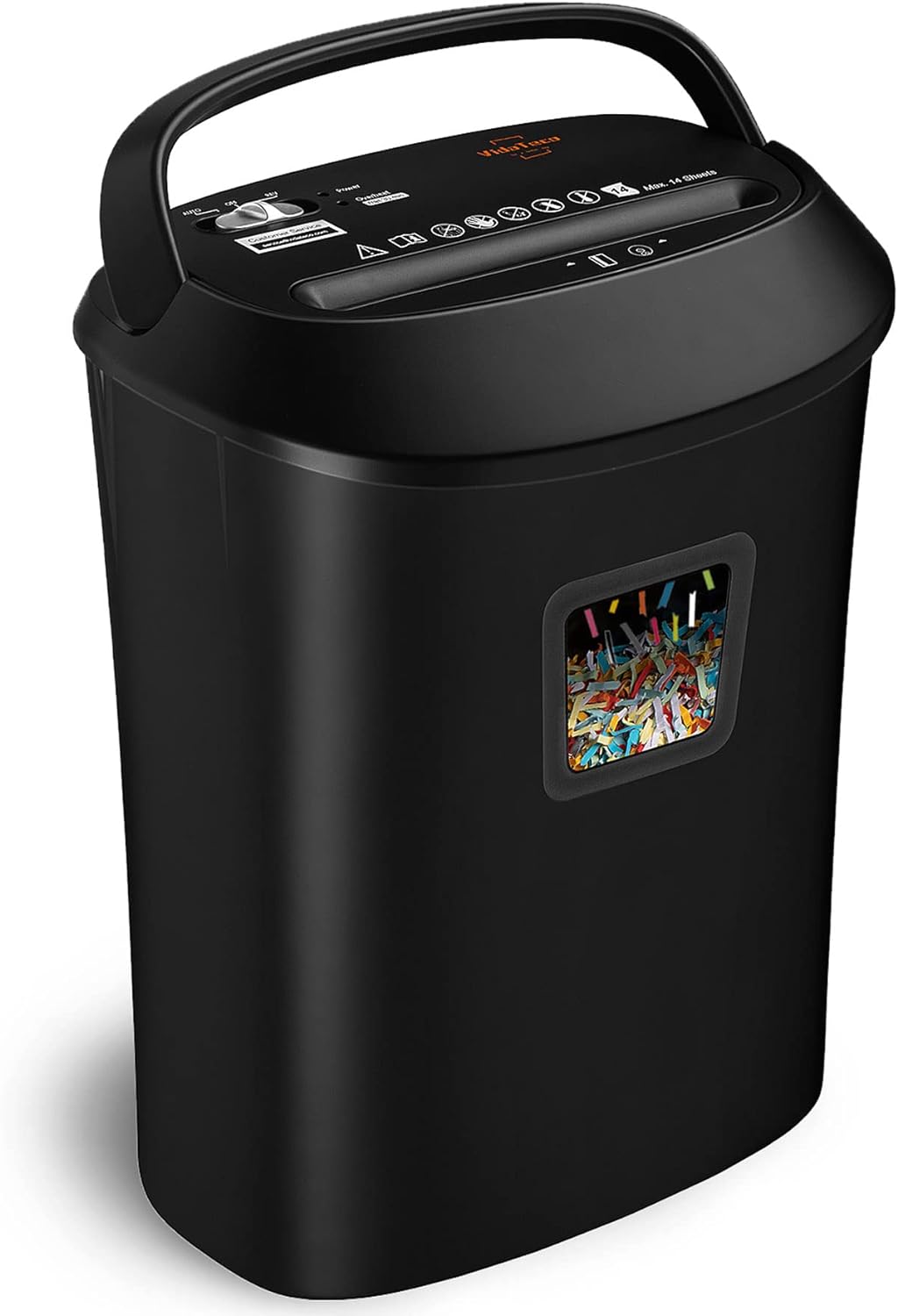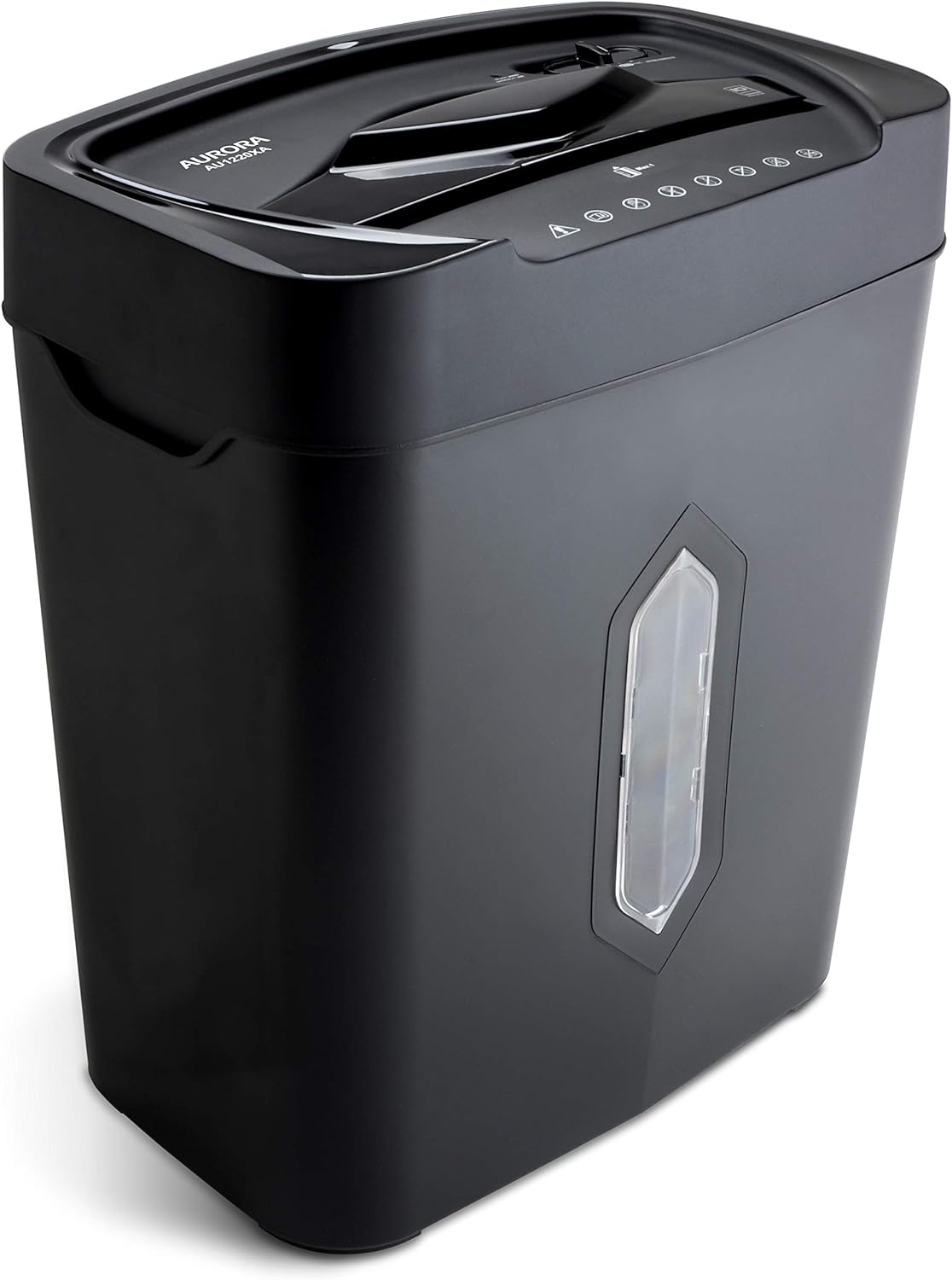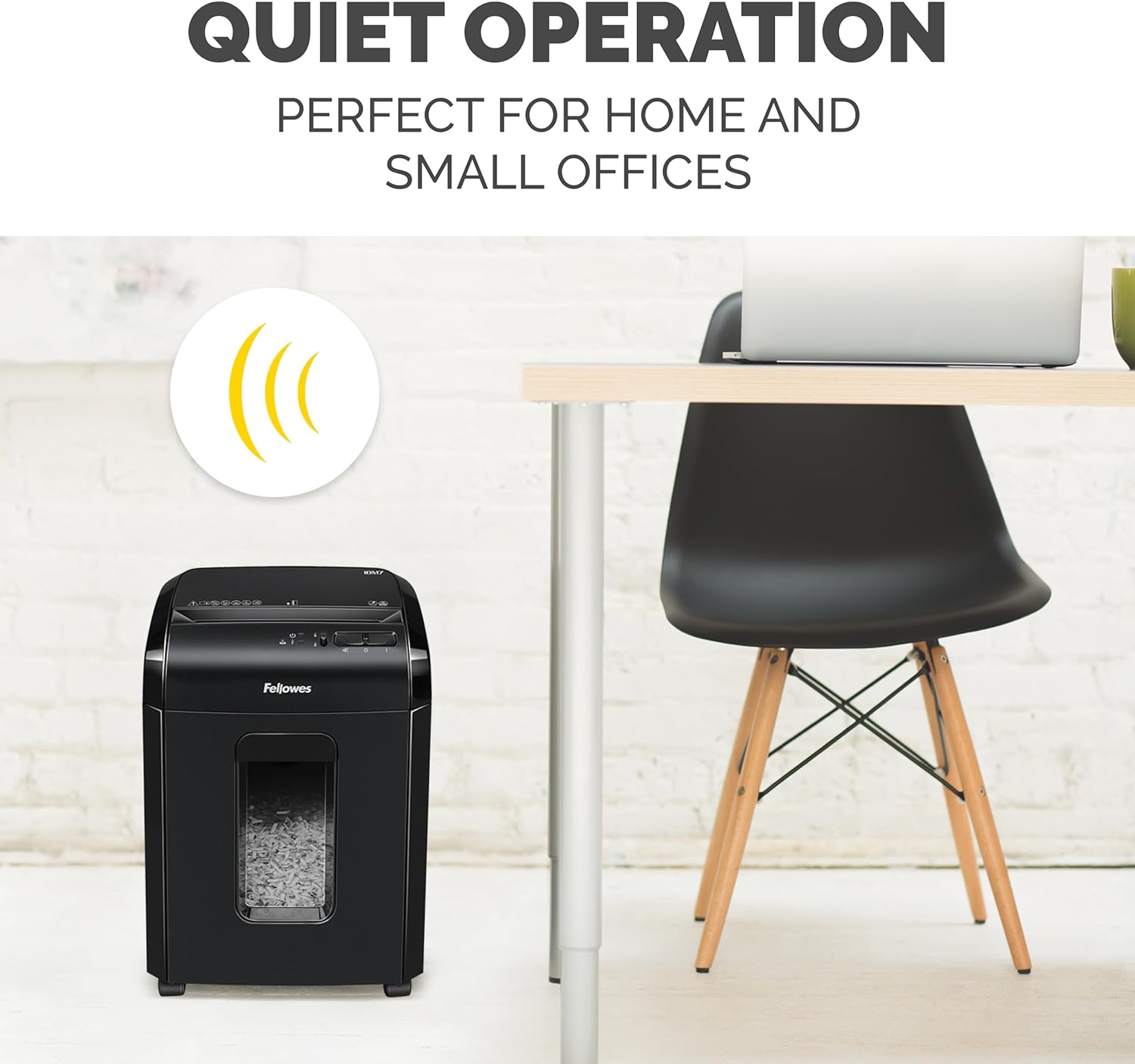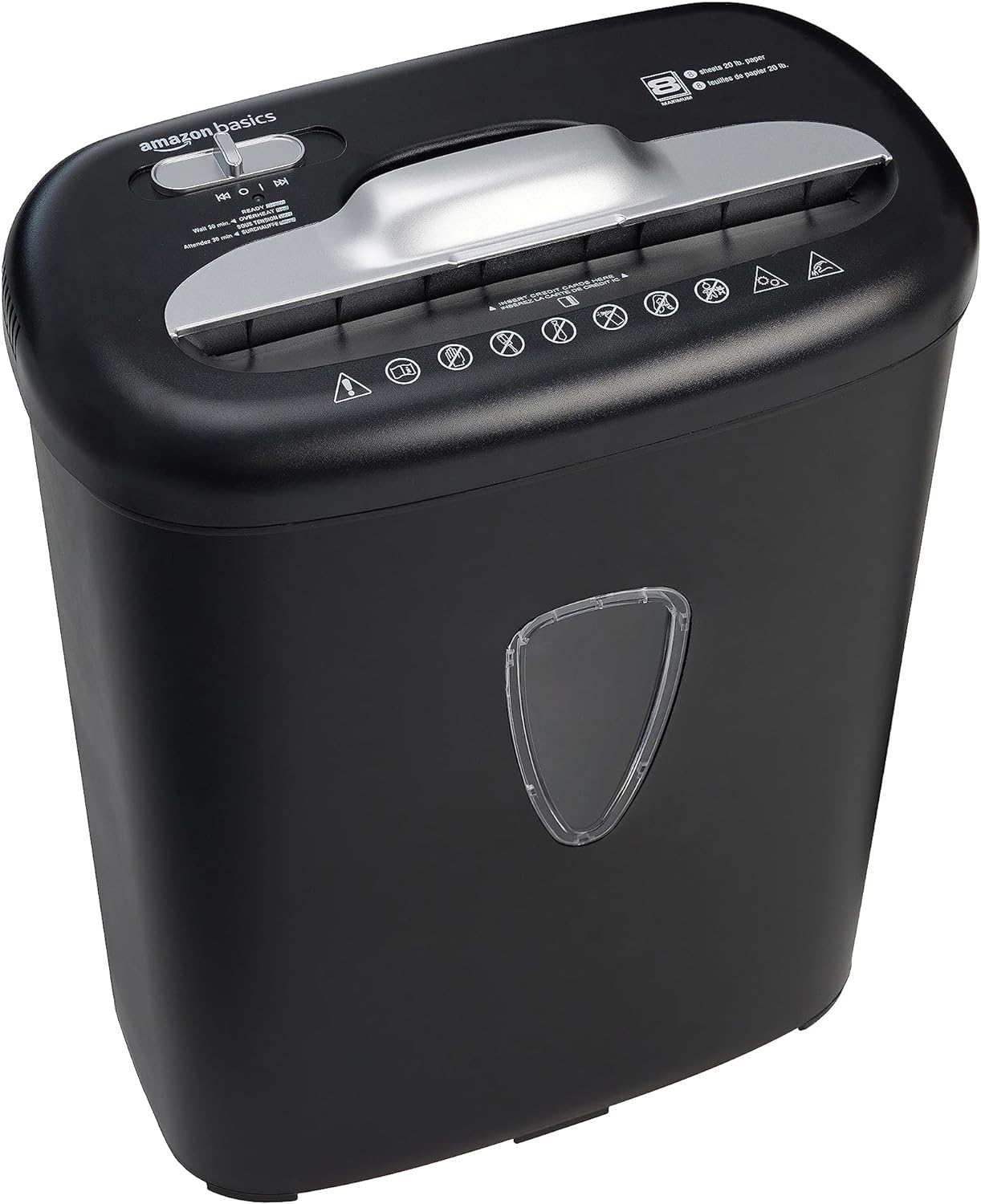If you’ve ever found yourself wondering about the right time to replace your shredder, you’re not alone. Whether it’s for personal or professional use, shredders play an important role in protecting sensitive information. In this article, we’ll explore the signs that indicate it may be time to invest in a new shredder. From decreased performance to outdated security features, being aware of these indicators will help ensure your confidential documents are handled safely and efficiently. So, let’s take a closer look at the telltale signs that it’s time to bid farewell to your trusted old shredder.
Signs of Wear and Tear
Excessive Noise
One of the signs that it may be time to replace your shredder is if you notice excessive noise during operation. If your shredder is making loud grinding or screeching noises, it could indicate that there is wear and tear on the internal components. These noises are often caused by misaligned blades or a faulty motor. While some noise is to be expected, especially with older shredders, if the noise becomes unbearable or significantly louder than usual, it is a good indicator that it’s time for a replacement.
Frequent Jamming
Another sign of wear and tear in a shredder is frequent jamming. If your shredder frequently gets stuck or stops midway through shredding, it could be a sign that the blades are worn down or there is debris build-up inside the machine. Jamming not only interrupts your workflow but can also cause further damage to the shredder. If you find yourself constantly clearing paper jams, it’s likely time to invest in a new shredder that can handle your shredding needs more effectively.
Blade Dullness
Blade dullness is a common issue that can occur over time with shredders. As you continue to use the machine, the blades can become dull or worn, resulting in poor shredding performance. Signs of blade dullness include shredding results that are uneven or incomplete, with strips of paper left unshredded or only partially shredded. If you notice this happening frequently, it may be time to replace the blades or consider investing in a new shredder altogether.
Maintenance and Repairs
Regular Cleaning
To ensure the longevity of your shredder, regular cleaning is essential. Dust, paper particles, and other debris can accumulate inside the machine over time, leading to performance issues and potential damage. It is recommended to clean your shredder at least once a month. Use a soft cloth or brush to remove any debris from the blades and feed entry, and never use water or cleaning solutions as they can damage the internal components. By keeping your shredder clean, you can prevent unnecessary wear and tear and prolong its lifespan.
Replacing Blades
If you notice that your shredder’s blades are dull or damaged, you may be able to replace them instead of purchasing a new shredder. Many shredders have replacement blade options available, either directly from the manufacturer or through third-party sellers. Before replacing the blades, refer to the manufacturer’s instructions and ensure that the replacement blades are compatible with your specific shredder model. Replacing blades can help restore the shredder’s performance and save you from the cost of buying a new machine.
Repairing Motor
If your shredder is experiencing motor issues, such as overheating or complete failure, it may be worth considering repairs instead of immediately replacing it. Contact a professional shredder repair service to assess the motor and determine if it can be fixed. In some cases, a simple motor repair or replacement may be sufficient to get your shredder up and running again. However, if the repair costs are too high or the motor is beyond repair, it may be more cost-effective to invest in a new shredder.
Age of the Shredder
Duration of Use
The duration of use is a vital factor to consider when determining if it’s time to replace your shredder. Shredders, like any other mechanical device, have a limited lifespan. The average lifespan of a shredder can range from five to ten years, depending on the quality of the machine and the level of usage. If you have been using your shredder heavily for several years and it is showing signs of wear and tear, it may be a good indication that it’s time to retire the old machine and invest in a newer model.
Manufacturer’s Recommendations
Manufacturers often provide recommendations on how long their shredders are expected to last. It’s essential to review the manufacturer’s guidelines and recommendations for your specific shredder model. These recommendations can give you a better understanding of the expected lifespan of your shredder and help you decide when it’s time to replace it. Additionally, following the manufacturer’s maintenance instructions can help prolong the lifespan of your shredder and ensure optimal performance.
Shredder Capacity
Increasing Workload
If the workload of your shredder has increased significantly or consistently exceeds its capacity, it may be a sign that it’s time for an upgrade. Overloading a shredder can cause excessive strain on its internal components, leading to accelerated wear and tear. If you find yourself constantly pushing the limits of your current shredder’s capacity, it may be worth investing in a more powerful and robust shredder that can handle your current workload without sacrificing performance.
Upgrade Options
When considering upgrading your shredder, explore the available options in the market. Look for shredders with a larger capacity that can handle a higher volume of paper or materials. Additionally, consider features such as higher shredding speeds, increased sheet capacity, and advanced safety features. Upgrading to a more advanced shredder can not only improve efficiency and productivity but also provide a longer lifespan and better performance.

Changes in Security Needs
Higher Confidentiality Requirements
If your shredder is no longer meeting your increased confidentiality requirements, it’s time to evaluate whether it needs to be replaced. As technology evolves, so do the methods of data theft and security breaches. If you now handle more sensitive or classified documents that require a higher level of security, your current shredder may no longer be adequate. Look for shredders with advanced security features, such as cross-cut or micro-cut shredding, which provide enhanced data protection and ensure higher levels of confidentiality.
Regulatory Compliance Updates
In recent years, there have been various regulatory changes regarding data protection and privacy. These regulations often require organizations to adhere to specific shredding standards to safeguard confidential information. If your current shredder does not meet the updated regulatory compliance requirements, it’s important to consider replacing it. Non-compliance with these regulations can result in severe penalties and reputational damage. Investing in a shredder that meets the latest compliance standards will not only protect your organization but also ensure peace of mind.
Technological Advancements
Outdated Features
As technology advances, shredders also undergo significant improvements. Older shredder models may lack the cutting-edge features and functionality available in newer models. If your current shredder lacks features such as automatic shredding, jam prevention, or advanced user interfaces, it may be time to upgrade to a more technologically advanced model. These features can enhance efficiency, simplify operation, and improve overall shredding performance.
Compatibility Issues
With technological advancements, compatibility becomes a crucial factor to consider. If your current shredder is no longer compatible with other office equipment or software, it can lead to workflow disruptions and inefficiencies. For example, if your shredder cannot connect to your network or integrate with document management systems, it may severely limit your productivity. Upgrading to a shredder that offers better compatibility with your existing systems and equipment can make document management more seamless and streamlined.
Cost-Effectiveness
High Repair Costs
When considering whether to replace your shredder, it is important to evaluate the cost of repairs versus the cost of purchasing a new machine. If the repair costs are significantly high or if the required repairs are frequent, it may be more cost-effective in the long run to invest in a new shredder. Continuously repairing an old and unreliable shredder can become a financial burden and may not be the most efficient use of resources. Consider the cost-effectiveness and potential savings associated with upgrading to a new shredder that offers better performance and reliability.
Energy Efficiency
Energy efficiency is another cost-related factor to consider when deciding whether to replace your shredder. Older shredder models may consume more energy, resulting in higher utility bills. Upgrading to a newer, energy-efficient shredder can help reduce energy consumption and save on operating costs in the long term. Look for shredders with energy-saving features such as automatic power-off or energy-efficient motors to minimize your environmental footprint and lower your energy expenses.
Warranty Period
Expiration
The warranty period of your shredder plays a crucial role in determining whether it’s time to replace the machine. Most shredders come with a limited warranty that covers manufacturing defects and malfunctions for a specific period. If your shredder is no longer under warranty and you are experiencing issues or performance deterioration, it may be an indication that the machine has reached the end of its useful life. While some repairs may still be possible, the lack of warranty often makes investing in a new shredder a more viable option.
Extended Warranty Options
If your shredder is still within the warranty period or you prefer the added protection, consider exploring extended warranty options. Many manufacturers offer extended warranties that can provide coverage beyond the standard warranty. Investing in an extended warranty can give you additional peace of mind and financial protection. It’s important to carefully review the terms and conditions of any extended warranty before making a decision, taking into account the overall cost and the expected lifespan of the shredder.
Safety Hazards
Electrical Issues
Safety should always be a top priority when using any electrical device, including shredders. If your shredder is experiencing electrical issues such as power surges, sparks, or tripping circuit breakers, it’s important to address these safety hazards promptly. Electrical issues can pose a significant risk of fire or electrocution. If you encounter recurring electrical problems with your shredder, it may be time to replace it with a newer and safer model. Ensure that any replacement shredder meets all necessary safety standards and certifications.
Physical Damage
Physical damage to a shredder can compromise its performance and pose safety risks. If your shredder has suffered physical damage, such as a cracked housing, broken feed tray, or damaged shredding blades, it may not be safe to continue using. Physical damage can impair the shredder’s functionality and potentially cause injury to users. In such cases, it’s advisable to replace the damaged shredder to ensure safe and efficient operation.
Professional Recommendation
Consulting a Shredding Expert
If you are unsure whether it’s time to replace your shredder or if you need assistance in selecting the right shredder for your needs, it’s always a good idea to consult with a shredding expert. These professionals have in-depth knowledge and expertise in shredder technologies and can provide personalized recommendations based on your specific requirements. They can assess your current shredder, evaluate its condition, and provide guidance on repair options or the most suitable replacement model. Consulting a shredding expert can help you make an informed decision and ensure that you choose a shredder that meets your needs for years to come.
In conclusion, there are several key factors to consider when determining if it’s time to replace your shredder. Signs of wear and tear, such as excessive noise, frequent jamming, and blade dullness, can indicate that it’s time for a replacement or repairs. The age of your shredder and its capacity to handle your workload are also crucial considerations. Changes in security needs, technological advancements, cost-effectiveness, warranty expiration, safety hazards, and professional recommendations all play a role in making an informed decision. By carefully evaluating these factors and considering the specific needs of your organization, you can determine when it’s time to replace your shredder and invest in a more efficient and reliable solution.



